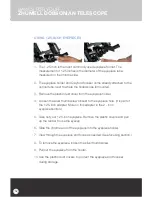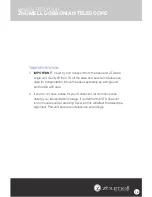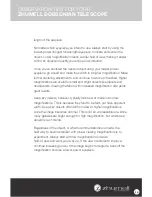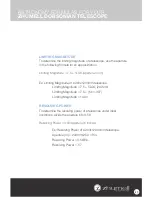
23
A reliably quick way to judge seeing conditions is to look at bright
stars about 40° above the horizon. If the stars appear to twinkle,
there is significant atmospheric distortion and viewing at high
magnification will not be ideal. If these stars are steadily bright,
chances of successful viewing at high magnification are much better.
Judging the transparency of the air is also important in determining
viewing conditions. The best air is free of moisture, dust, and smoke,
which tend to scatter light, reducing a viewed object’s brightness.
How many stars can you see with your naked eye? If you are unable
to see stars of magnitude 3.5 or dimmer, transparency in your area
is poor. A good indicator star for this test is Megrez (mag. 3.4) - the
star in the Big Dipper connecting the handle to the dipper. If Megrez
is not visible, elements in the air will negatively affect your view.
DARK-ADAPTING YOUR EYES
When you go out into the dark, your eyes need time to adjust. You
will initially be able to see only a fraction of the stars and objects
your eyes are capable of. Remain in the dark (don’t look at any
lights or cell phones) for at least 30 minutes, and your eyes should
be around 80% of their full dark-adapted sensitivity. Every time
bright light comes into your eye, the dark-adapting process will
start over.
When eyes are fully dark-adapted, you will probably still need to see
what you’re doing. Use a red-light flashlight to maneuver around
the area. A regular flashlight covered in red cellophane will work, but
red LED lights are best.
OBSERVATION TIPS FOR YOUR
ZHUMELL DOBSONIAN TELESCOPE










































